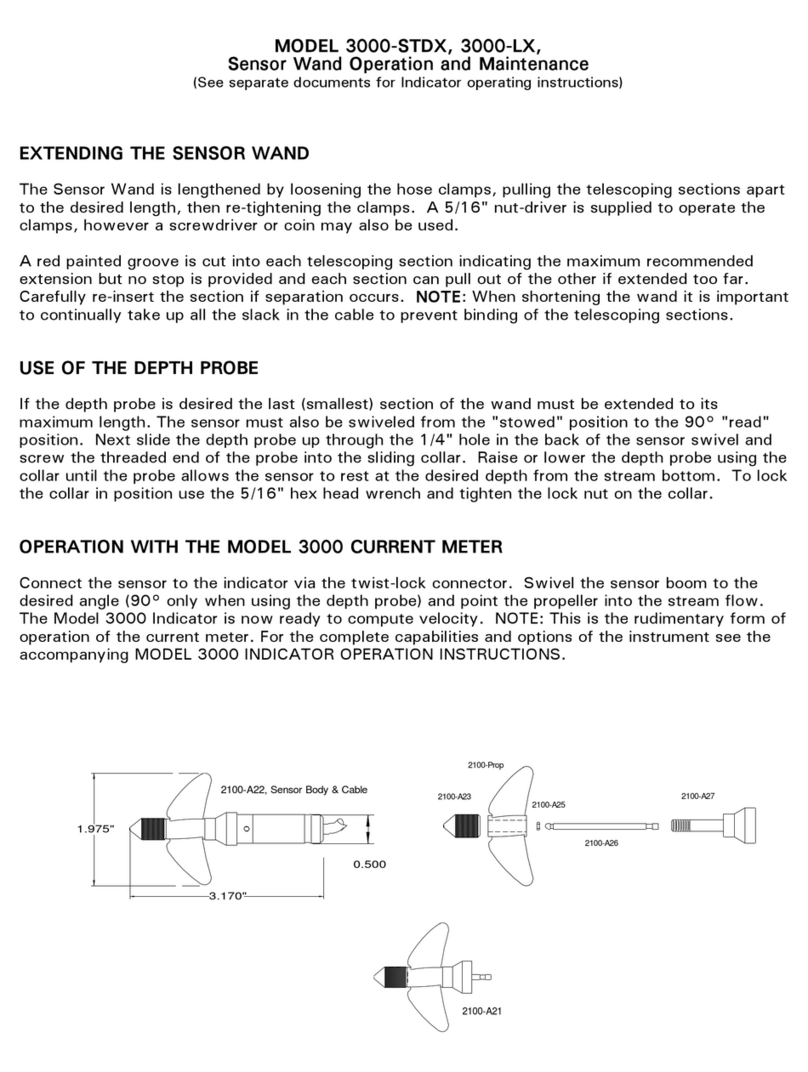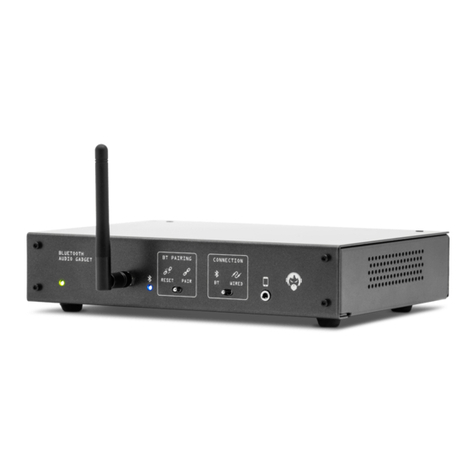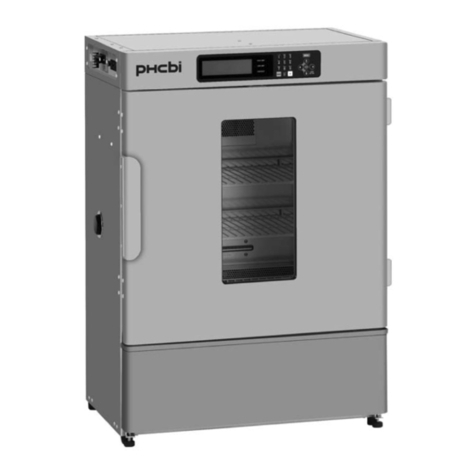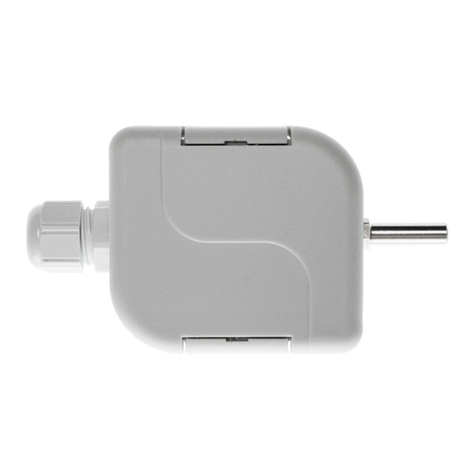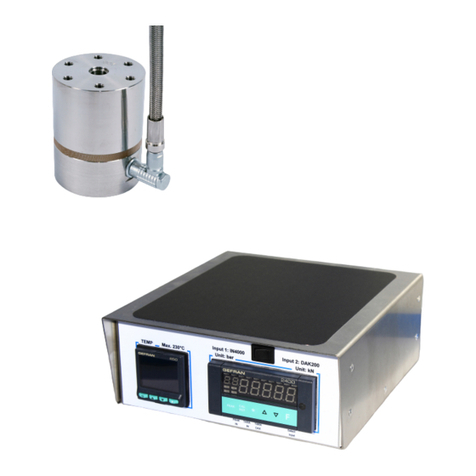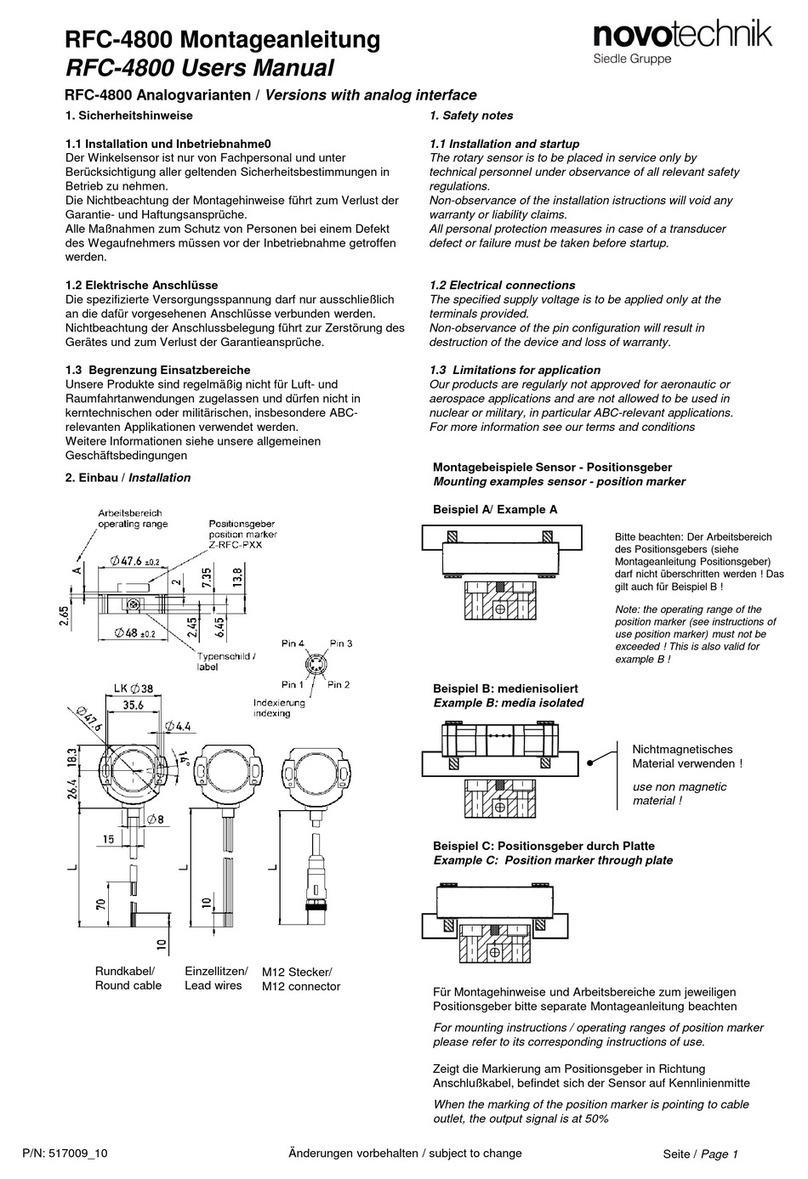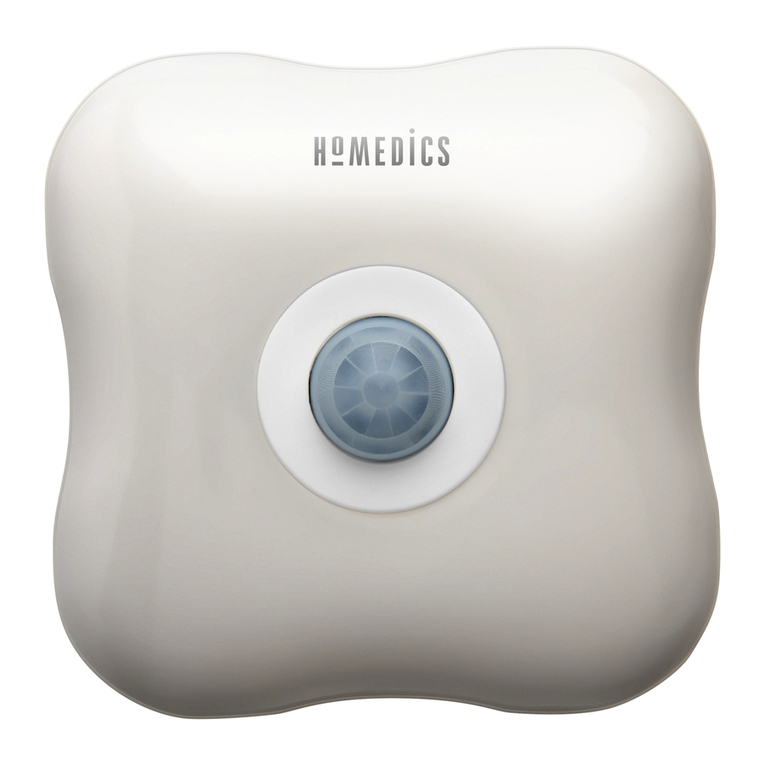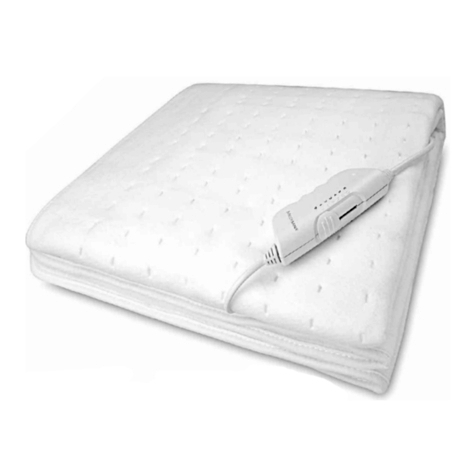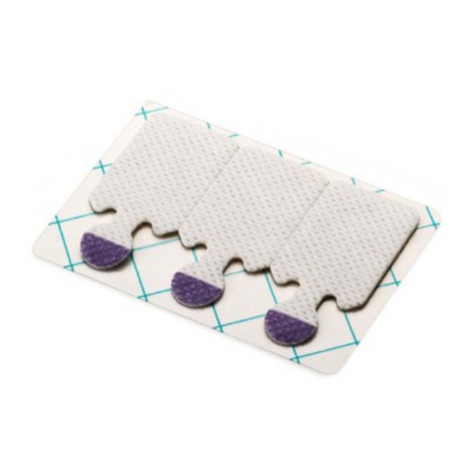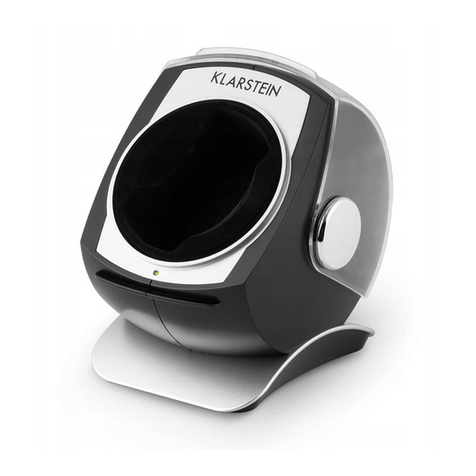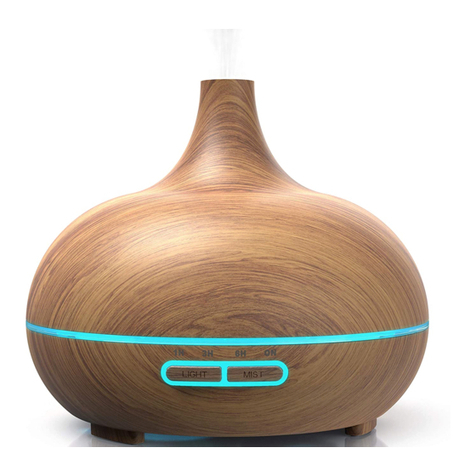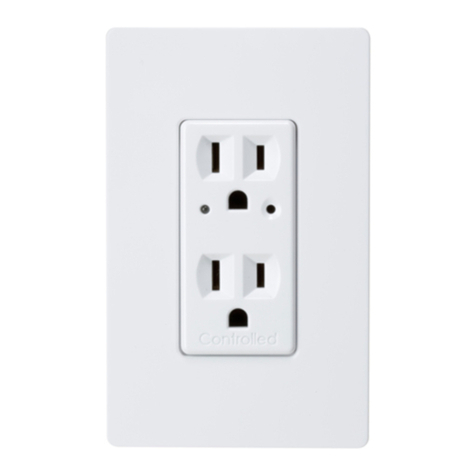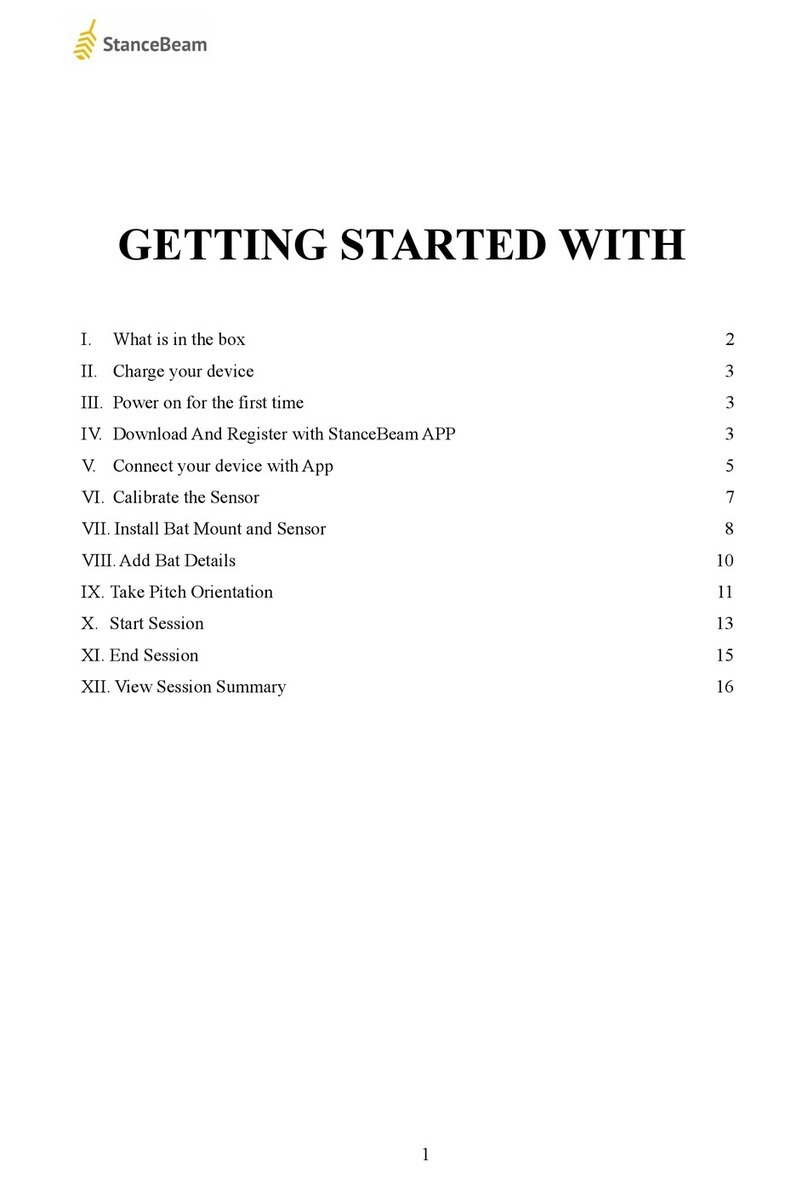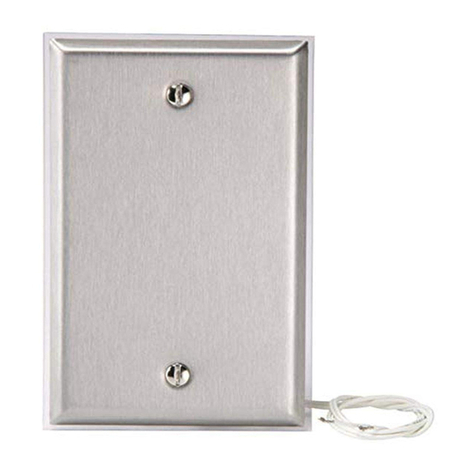Swoffer Instruments 2100-STDX User manual

MODEL 2100-STDX, 2100-LX,
Sensor Wand Operation and Maintenance
EXTENDING THE SENSOR WAND
The Sensor Wand is lengthened by loosening the hose clamps, pulling the telescoping sections apart
to the desired length, then re-tightening the clamps. A 5/16" nut-driver is supplied to operate the
clamps, however a screwdriver or coin may also be used.
A red painted groove is cut into each telescoping section indicating the maximum recommended
extension but no stop is provided and each section can pull out of the other if extended too far.
Carefully re-insert the section if separation occurs. NOTE: When shortening the wand it is important
to continually take up all the slack in the cable to prevent binding of the telescoping sections.
USE OF THE DEPTH PROBE
If the depth probe is desired the last (smallest) section of the wand must be extended to its
maximum length. The sensor must also be swiveled from the "stowed" position to the 90° "read"
position. Next slide the depth probe up through the 1/4" hole in the back of the sensor swivel and
screw the threaded end of the probe into the sliding collar. Raise or lower the depth probe using the
collar until the probe allows the sensor to rest at the desired depth from the stream bottom. To lock
the collar in position use the 5/16" hex head wrench and tighten the lock nut on the collar. NOTE:
The Model 2100-EXC depth probe consists of three sections plus a "foot". The top-most section
only threads onto the locking collar. Each of the other sections then thread together according to
the measuring depth required. Install the "foot" on the last section.
OPERATION WITH THE MODEL 2100 CURRENT METER
Connect the sensor to the indicator via the twist-lock connector. Swivel the sensor boom to the
desired angle (90° only when using the depth probe) and point the propeller into the stream flow.
Rotate the indicator selector switch to the MIN. Velocity position. The Model 2100 Indicator will
now display the current velocity. NOTE: This is the simplest form of operation of the current meter.
For the complete capabilities and options of the instrument see the accompanying MODEL 2100
INDICATOR OPERATION INSTRUCTIONS.
3.170"
1.975"
0.500
2100-A22, Sensor Body & Cable
2100-A23
2100-Prop
2100-A25
2100-A26
2100-A27
2100-A21

MODEL 2100-STDX, 2100-LX / WAND OPERATION / PAGE
2
OF 4
CARE OF THE SENSING WAND AND THE PHOTO-FIBER-OPTIC SENSOR
1. After each day's use extend the wand sections completely and wipe all surfaces dry. This
will reduce corrosion and prevent future difficulty in lengthening the sections. If possible
allow the sections to completely air dry before collapsing and storing the wand. A light film
of oil or silicone grease will help the sections slide and helps to prevent the normal corrosion
which occurs.
2. Treat the sensor boom gently. When swiveling into and out of position grasp only the BOOM,
not the SENSOR BODY or PROPELLER ASSEMBLY. The sensor swivel can be tightened by
adjusting the through-bolt and nut (see back page diagrams).
3. Take care that the electrical cable loop which passes through the sensor swivel does not
protrude from the groove provided for the cable. Carefully take up the slack in the cable
when the loop extends beyond the back side of the swivel bar.
4. The electrical connector is water resistant at the mating faces only and then only when the
two halves are mated. Keep both ends as dry as possible when not in use.
CARE OF THE MODEL 2100 SENSOR
The Sensor of the Model 2100 Current Meter is the single most important part of the instrument and great care
must be observed for its continued accurate output.
Keep the Sensor/Propeller assembly above the stream bed when taking readings and avoid rocks and other
hazards when moving from one measuring site to another. This will prevent damage to the Rotor, Rotor Shaft,
Propeller and the Sensor Body.
Never transport or store the sensor wand with the propeller rotor installed.Use the 1/16" hex screwdriver to
loosen the setscrew and remove the entire rotor assembly when not using the Model 2100. Do not tighten the
set screw any tighter than necessary to keep the rotor in place on the sensor. If too tight, the set screw can
damage the surface of the rotor shaft causing it in turn to damage the inside of the fiberoptic rotor when it is
removed for normal maintenance and cleaning.
Always replace the battery in the Model 2100 Indicator with a fresh one.
1. During rough use check the propeller frequently for frayed leading edges and for cracks. Chipped or
cracked props should be replaced. Frayed leading edges can be brought back to acceptable levels of
operation by reshaping them with 150 grit (or finer) sandpaper. Propellers which show signs of being
bent or misshapen should be discarded.
2. Rotational friction is by far the biggest cause of erroneous data especially at velocities below 2 feet per
second. Check the freedom of rotation frequently especially in turbid water or after rough handling. In
some measuring situations it may be necessary to completely disassemble the rotor and clean the parts
with clear water after each immersion. Use spare rotor assemblies and interchange them often. Never
leave the rotor assembly attached to the sensor after taking readings.
3. Water is the lubricant for the Model 2100 rotor. "Canned air" and spray type degreasers should be
used to regularly clean the "bore" of the Rotor (2100-A27) and the polished surface of the Rotor Shaft
(2100-A26). Avoid oil & grease if possible.
4. The Rotor Assembly (2100-A21) should spin very freely when held in the vertical position (propeller
pointing up) and simply blow lightly on the propeller. If it does not, clean the bore of the Rotor and the
surface of the Rotor Shaft thoroughly.
One method to determine an acceptable level of low-velocity performance by a particular Rotor
Assembly is to perform a "Spin Test" :
Install the Rotor on the sensor, connect the sensor to the Indicator, and place the Indicator in the
COUNT mode. With the propeller pointing up blow very hard straight down on the propeller. At the

MODEL 2100-STDX, 2100-LX / WAND OPERATION / PAGE
3
OF 4
instant you stop blowing hit the RESET button on the indicator and allow the rotor to coast to a stop.
A rotor which will perform to the low velocity limits of its design produces counts on the indicator of at
least 300.
5. If the Rotor begins to "buzz" when spun by hand it means that the bore diameter of the Rotor (2100-
A27) and the outside diameter of the Shaft (2100-A26) are too far apart. In this case it is advised to
replace the Rotor with a new one. If the shaft shows visible signs of wear replace it also. Severe
buzzing indicates that the rotor is bouncing off the shaft as it rotates around it. This slows the rotor
significantly especially at velocities above 3 FPS and will cause readings to be slower than actual.
Note: Some slight buzzing may be heard in the later versions of the rotor when it is spun "dry". This
buzzing should cause no significant loss of efficiency.
6. Periodically examine the Thrust-Bearing Nut (2100-A23) and check inside on the bottom (the bearing
surface). If a pronounced "cup" begins to form (wear from the ball-shaped end of the Rotor Shaft) the
2100-A23 should be replaced. This is especially necessary when using the Model 2100 in low-flow
situations, 2 FPS or lower.
7. The Photo-Optics in the sensor body must be kept clean. Use soap and water and a soft tooth brush
to keep the "eyes" clean if necessary. Be careful and do not scratch the Photo-optics as this could
cause unwanted light scattering and therefore erroneous readings. Likewise the Fiber optics "eyes" in
the base of the Rotor (2100-A27) should also be kept clean.
Treat the Model 2100 Rotor Assembly and Sensor with care and it will continue to produce accurate data with
minimum maintenance.
SWOFFER INSTRUMENTS, INC.
13704 24th St. E, #A108
Sumner, WA 98390 U.S.A.
(253) 661 8706
www.swoffer.com

MODEL 2100-STDX, 2100-LX / WAND OPERATION / PAGE
4
OF 4
This manual suits for next models
1
Table of contents
Other Swoffer Instruments Accessories manuals
